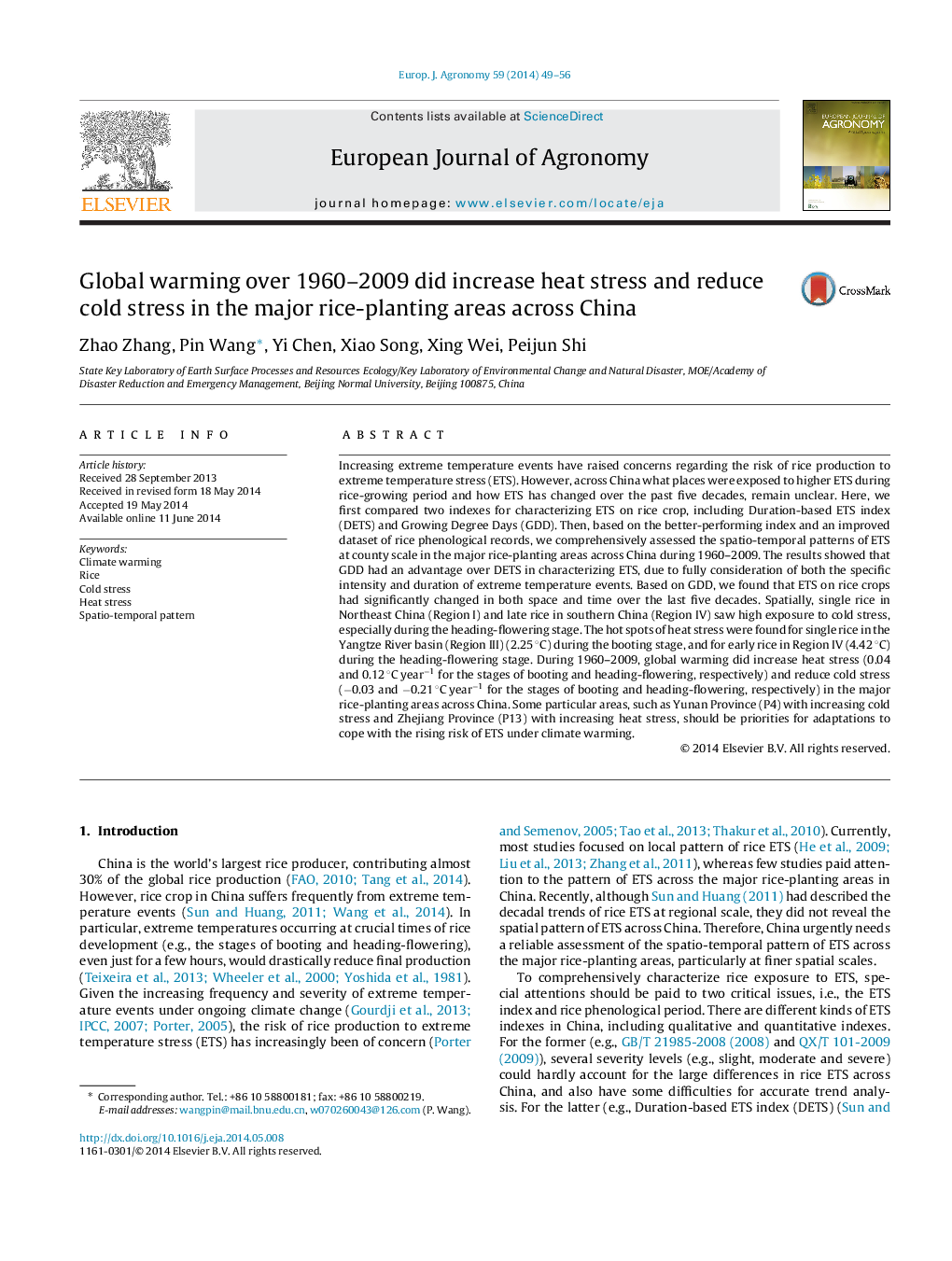| کد مقاله | کد نشریه | سال انتشار | مقاله انگلیسی | نسخه تمام متن |
|---|---|---|---|---|
| 4508903 | 1624466 | 2014 | 8 صفحه PDF | دانلود رایگان |
• We compared two indexes for characterizing extreme temperature stress (ETS) on rice.
• A better index and an improved dataset of rice phenological records were used.
• The spatial-temporal patterns of ETS on rice were analyzed at county scale.
• Global warming did increase heat stress and reduce cold stress on rice across China.
Increasing extreme temperature events have raised concerns regarding the risk of rice production to extreme temperature stress (ETS). However, across China what places were exposed to higher ETS during rice-growing period and how ETS has changed over the past five decades, remain unclear. Here, we first compared two indexes for characterizing ETS on rice crop, including Duration-based ETS index (DETS) and Growing Degree Days (GDD). Then, based on the better-performing index and an improved dataset of rice phenological records, we comprehensively assessed the spatio-temporal patterns of ETS at county scale in the major rice-planting areas across China during 1960–2009. The results showed that GDD had an advantage over DETS in characterizing ETS, due to fully consideration of both the specific intensity and duration of extreme temperature events. Based on GDD, we found that ETS on rice crops had significantly changed in both space and time over the last five decades. Spatially, single rice in Northeast China (Region I) and late rice in southern China (Region IV) saw high exposure to cold stress, especially during the heading-flowering stage. The hot spots of heat stress were found for single rice in the Yangtze River basin (Region III) (2.25 °C) during the booting stage, and for early rice in Region IV (4.42 °C) during the heading-flowering stage. During 1960–2009, global warming did increase heat stress (0.04 and 0.12 °C year−1 for the stages of booting and heading-flowering, respectively) and reduce cold stress (−0.03 and −0.21 °C year−1 for the stages of booting and heading-flowering, respectively) in the major rice-planting areas across China. Some particular areas, such as Yunan Province (P4) with increasing cold stress and Zhejiang Province (P13) with increasing heat stress, should be priorities for adaptations to cope with the rising risk of ETS under climate warming.
Journal: European Journal of Agronomy - Volume 59, September 2014, Pages 49–56
